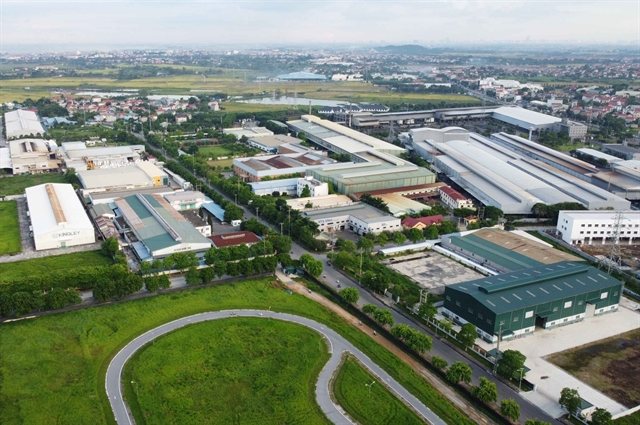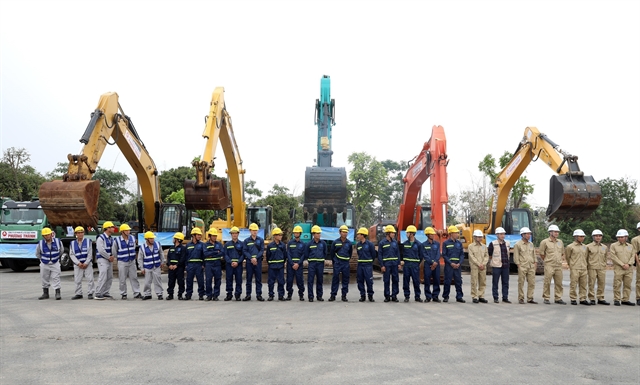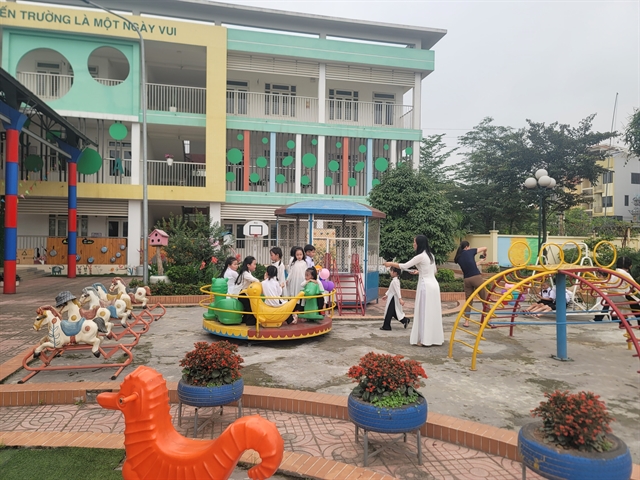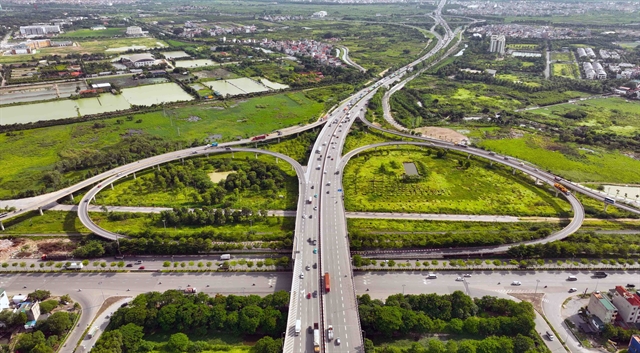 Society
Society


|
| With systematic infrastructure investment, many large-scale urban areas have been established, contributing to changes in the population and economic structure in Gia Lâm District (Hanoi). — Photos courtesy of the Coordination Office of the New-Style Rural Development Programme in Hà Nội |
HÀ NỘI — In recent years, Hà Nội’s suburban districts such as Đông Anh, Gia Lâm, Hoài Đức, Thanh Trì, and Đan Phượng have seen marked improvements in infrastructure and socioeconomic conditions. Once purely agricultural areas, these districts are now steadily approaching urban criteria, thanks to synchronized investment in transport and social infrastructure.
Particularly in Đông Anh District, key roads such as Võ Nguyên Giáp, Route 23B, and links to industrial and urban zones have been upgraded, enhancing connectivity with Hà Nội’s urban core and surrounding areas. As a result, Đông Anh became one of the first districts to complete the national new-style rural programme (in 2016) and is on track to meet advanced rural standards by 2025.
On May 19, Hà Nội broke ground on the Tứ Liên Bridge, a modern cable-stayed bridge connecting Tây Hồ District with Đông Anh across the Red River. With a total investment nearing VNĐ20 trillion, the bridge is expected to be completed in 2028, significantly reducing travel times and boosting the economic potential of Hà Nội’s northern suburban belt.

|
| On May 19, Hà Nội broke ground on the Tứ Liên Bridge — a modern cable-stayed bridge connecting Tây Hồ District with Đông Anh District across the Red River, with a total investment of nearly VNĐ20 trillion. The project is expected to be completed by 2028. |
Similarly, Hoài Đức District has accelerated public investment in infrastructure since 2021. Key projects such as Ring Road 3.5, LK1, LK8, DH02, and Lại Yên–Vân Canh roads have been implemented. The district is also preparing for major upgrades to National Highway 32 and LK5, while proposing further projects to complete its main traffic framework. Hoài Đức is simultaneously developing green spaces, schools, cultural and sports facilities, and healthcare centers, aiming to both improve rural quality of life and meet urban district standards.
According to the Hanoi Office for the Coordination of the New-Style Rural Development Program, from 2010 to 2024, Hà Nội mobilised over VNĐ183 trillion for rural development. In the 2021–2024 period alone, more than VNĐ86.8 trillion was invested. As a result, all 17 districts and Sơn Tây town have achieved new-style rural status. Notably, five districts—Đông Anh, Thanh Trì, Gia Lâm, Hoài Đức, and Thanh Oai—have been recognized for meeting advanced rural development standards.

|
| Hoài Đức District (Hanoi) focuses on synchronously implementing projects for schools and health stations, enabling residents to enjoy modern living conditions while preserving the traditional cultural values of the countryside. |
Infrastructure investment has also played a key role in attracting investment and shifting local economic structures. In Gia Lâm District, large-scale urban areas such as Vinhomes Ocean Park, Đặng Xá, and Trâu Quỳ have emerged, helping reshape the local population and economy. Industrial clusters like Phú Thị, Bát Tràng, and Dương Xá have developed rapidly, creating thousands of jobs with incomes higher than traditional farming.
In Đan Phượng, where 100 per cent of communes have achieved model rural status, infrastructure continues to evolve toward an urban profile. Early 2025 saw the launch of the Tây Thăng Long Road segment from Ring Road 3.5 to Dan Hoai Canal. Smart lighting systems, paved roads, flower-lined streets, and community spaces have been widely implemented. “Though still rural, we benefit from comprehensive infrastructure. Residents truly feel their quality of life improving each day,” said Nguyễn Mạnh Hà, Chairman of Hồng Hà Commune.

|
| Hanoi’s new-style rural development linked with urban growth helps create jobs for tens of thousands of rural workers. |
In Phúc Thọ District, efforts to promote a civilized lifestyle are being integrated with urban development. Since late 2024, the district has encouraged residents to build homes in a more orderly manner, requiring permits and commitments to protect the environment and community harmony. According to Chairman Nguyễn Đình Sơn, this is a key step in forming the behavioral foundation necessary for modern urban living.
Hanoi continues to direct districts to integrate rural development closely with future urban planning. This ensures that development standards are applied systematically and effectively.

|
| The interchange between National Highway 5 and National Highway 1 is a vital transport route connecting the capital Hanoi with provinces in the Northeastern region, passing through Gia Lâm District. |
The city also prioritises investment in inter-regional transportation, ring roads, water and sanitation systems, and waste treatment facilities. At the same time, it encourages localities to attract businesses and cooperatives to participate in infrastructure and service development. Through coordinated investment and planning, the gap between rural and urban areas is narrowing, allowing suburban residents to enjoy modern living conditions while preserving the traditional values of Hà Nội’s rural identity. — VNS
The article is published under the coordination of the Coordination Office of the New-Style Rural Development Programme in Hà Nội.